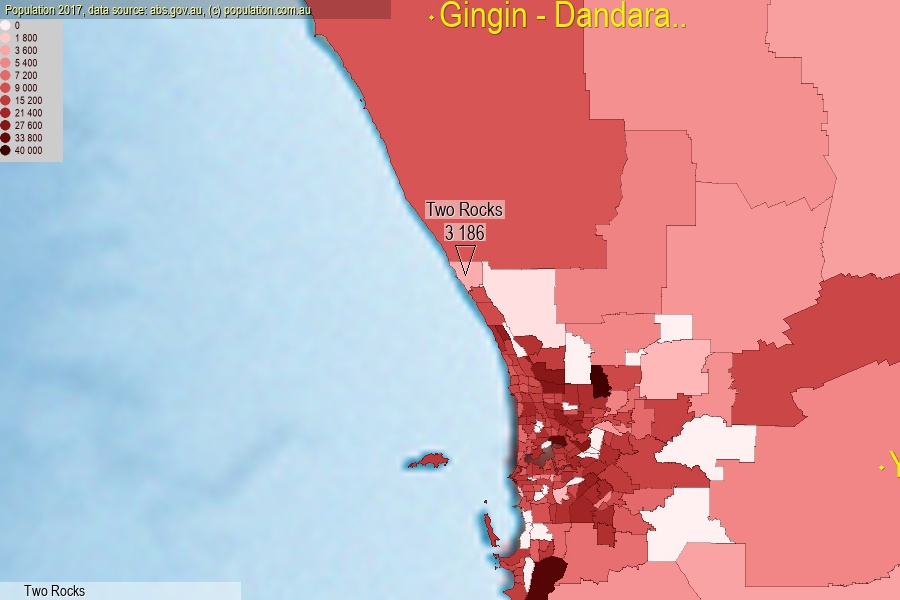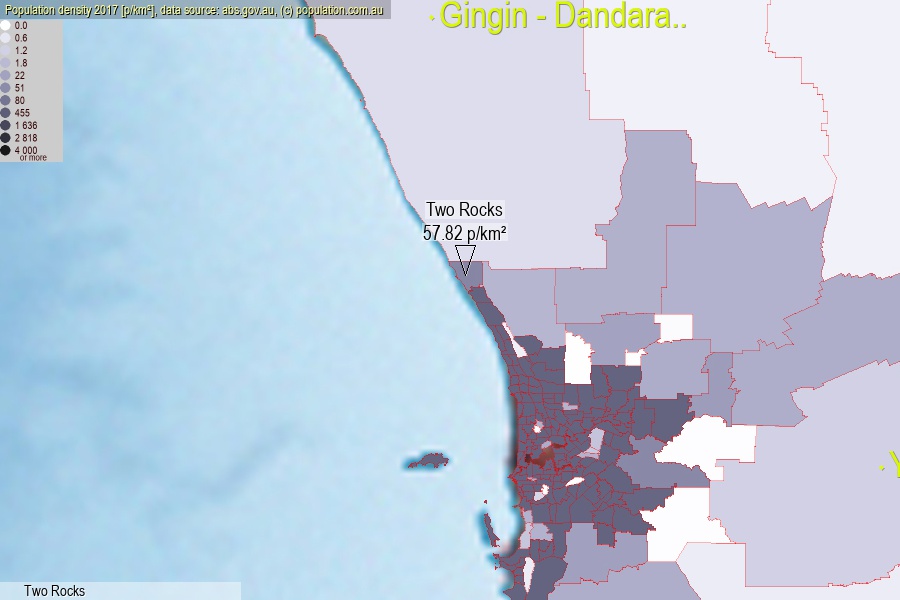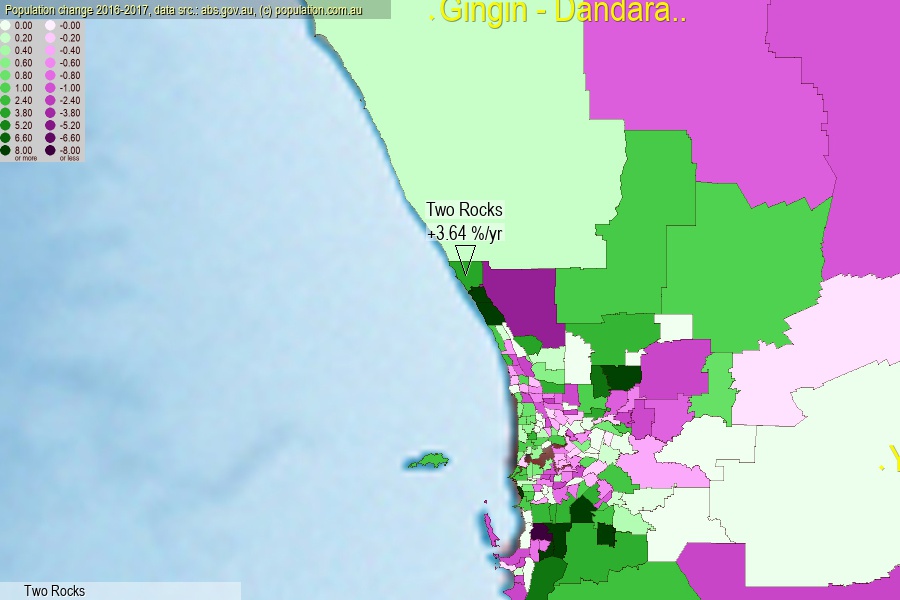 population.com.au
population.com.auLast official estimated population of Two Rocks (as Statistical Area Level 2) was 3 186 people (on 2017-06-30)[2]. This was 0.01% of total Australian population and 0.123% of WA population. Area of Two Rocks is 55.10 km², in this year population density was 57.82 p/km² . If population growth rate would be same as in period 2016-2017 (+3.64%/yr), Two Rocks population in 2025 would be 4 242. [0]



Click to enlarge. Two Rocks is located in the center of the images.
Population [people], population density [p./km²] and population change [%/year] [2]
View borders » (new window) [4]
[2001-2002] +0.23 %/Yr.
[2002-2003] +0.69 %/Yr.
[2003-2004] +3.50 %/Yr.
[2004-2005] +3.77 %/Yr.
[2005-2006] +2.41 %/Yr.
[2006-2007] +2.87 %/Yr.
[2007-2008] +2.79 %/Yr.
[2008-2009] +4.15 %/Yr.
[2009-2010] +4.31 %/Yr.
[2010-2011] +3.54 %/Yr.
[2011-2012] +5.00 %/Yr.
[2012-2013] +4.39 %/Yr.
[2013-2014] +2.56 %/Yr.
[2014-2015] +6.75 %/Yr.
[2015-2016] +12.39 %/Yr.
[2016-2017] +3.64 %/Yr.
[0] Calculated with linear interpolation from officially estimated population
[1] Read more about SA2 and Australian Statistical Geography Standard (ASGS) on abs.gov.au
[2] Population data from Australian Bureau of Statistics (Population and density: 2017; change: 2016-2017)
[3] Digital Boundaries: Australian Statistical Geography Standard (ASGS) 2016.
[4] Border coordinates are simplifyed using Ramer-Douglas-Peucker algorithm.